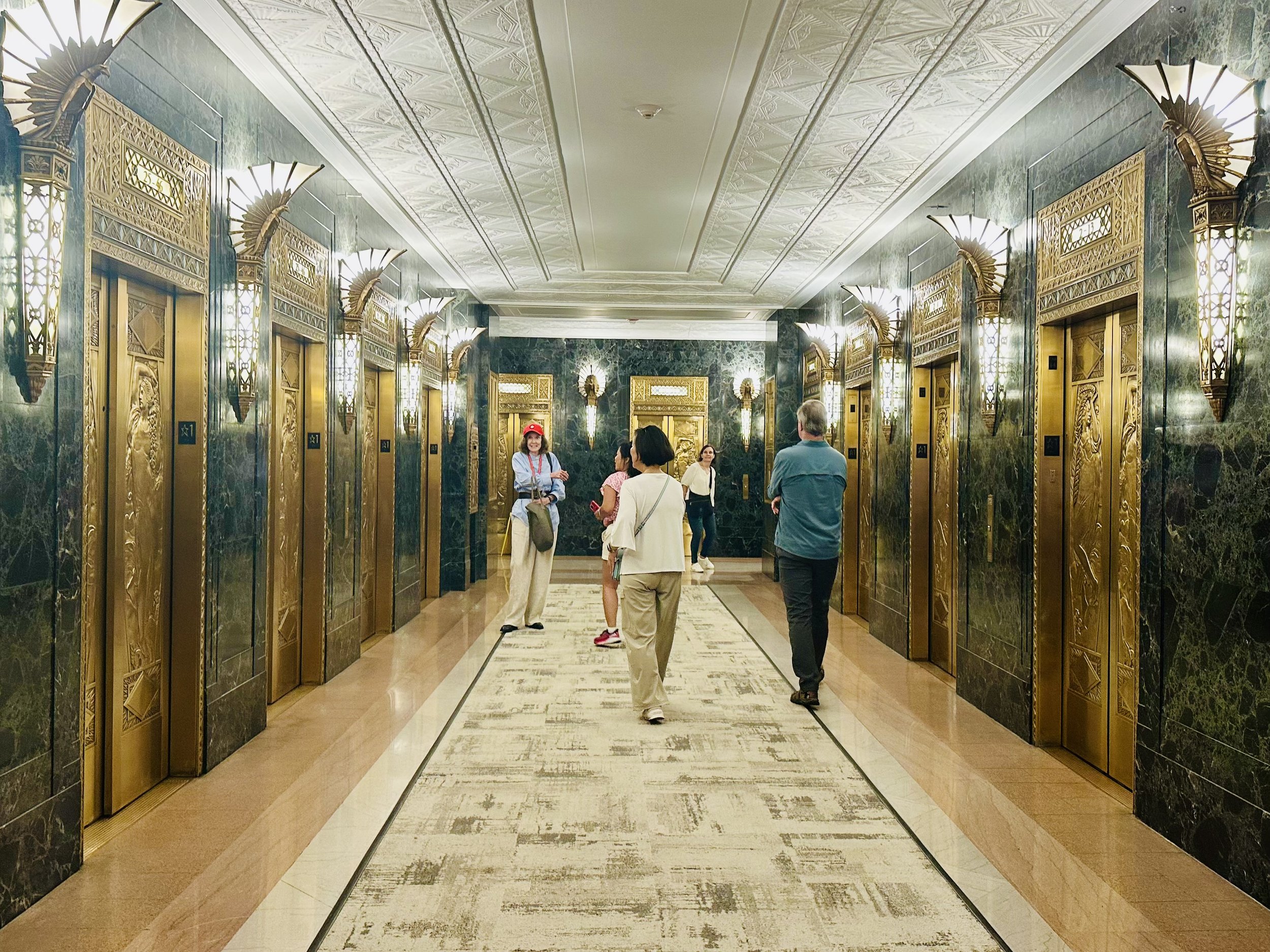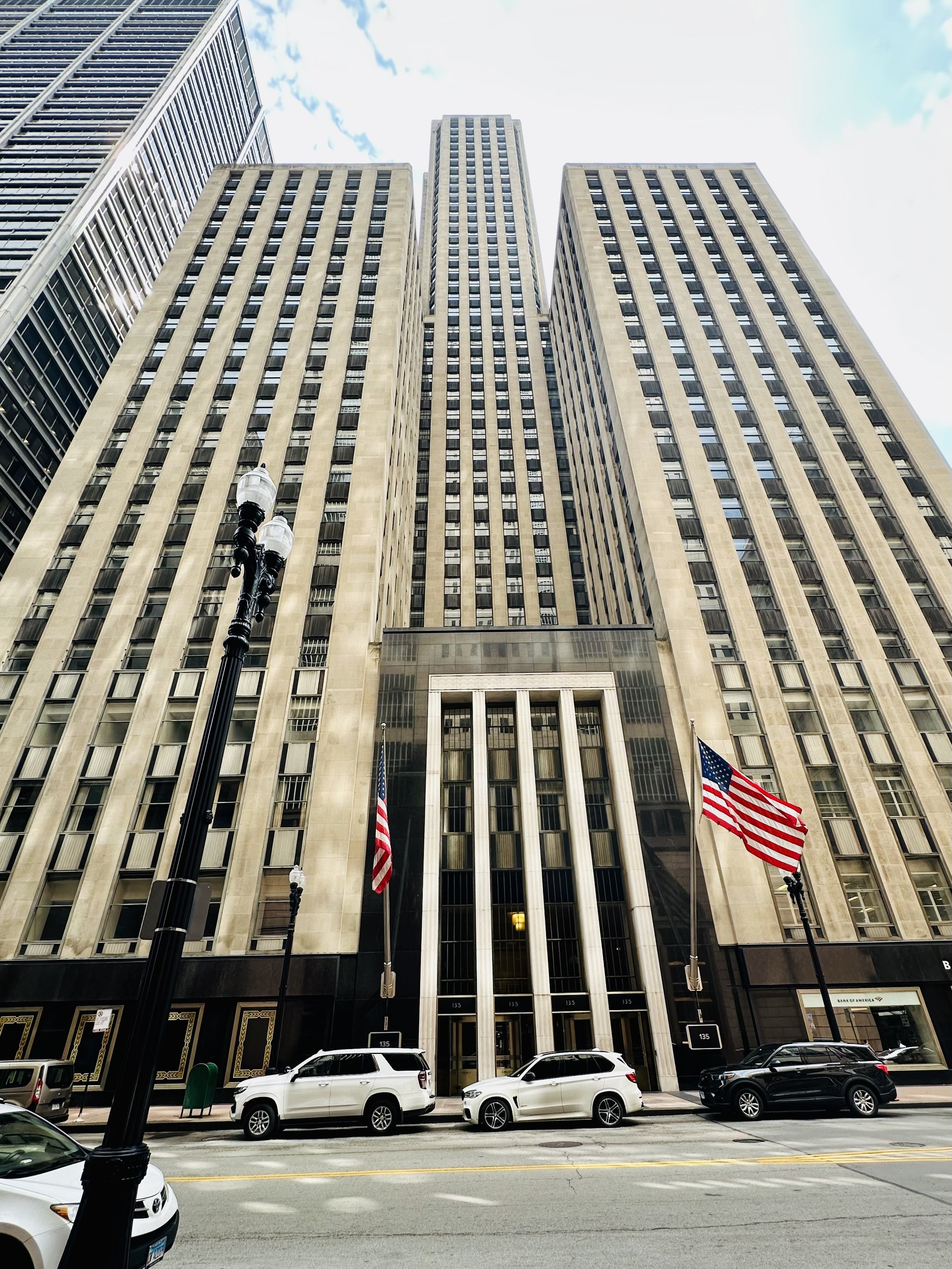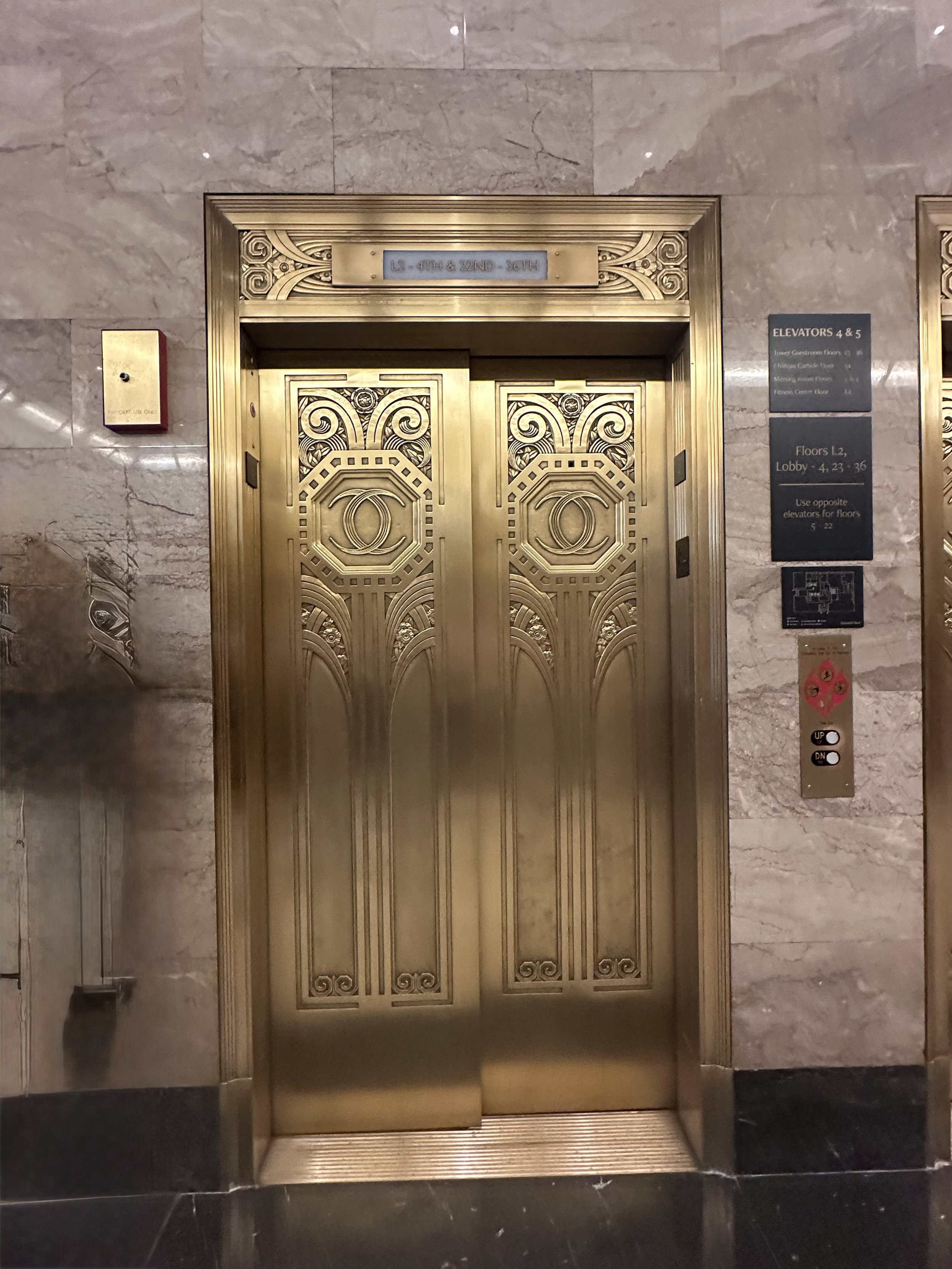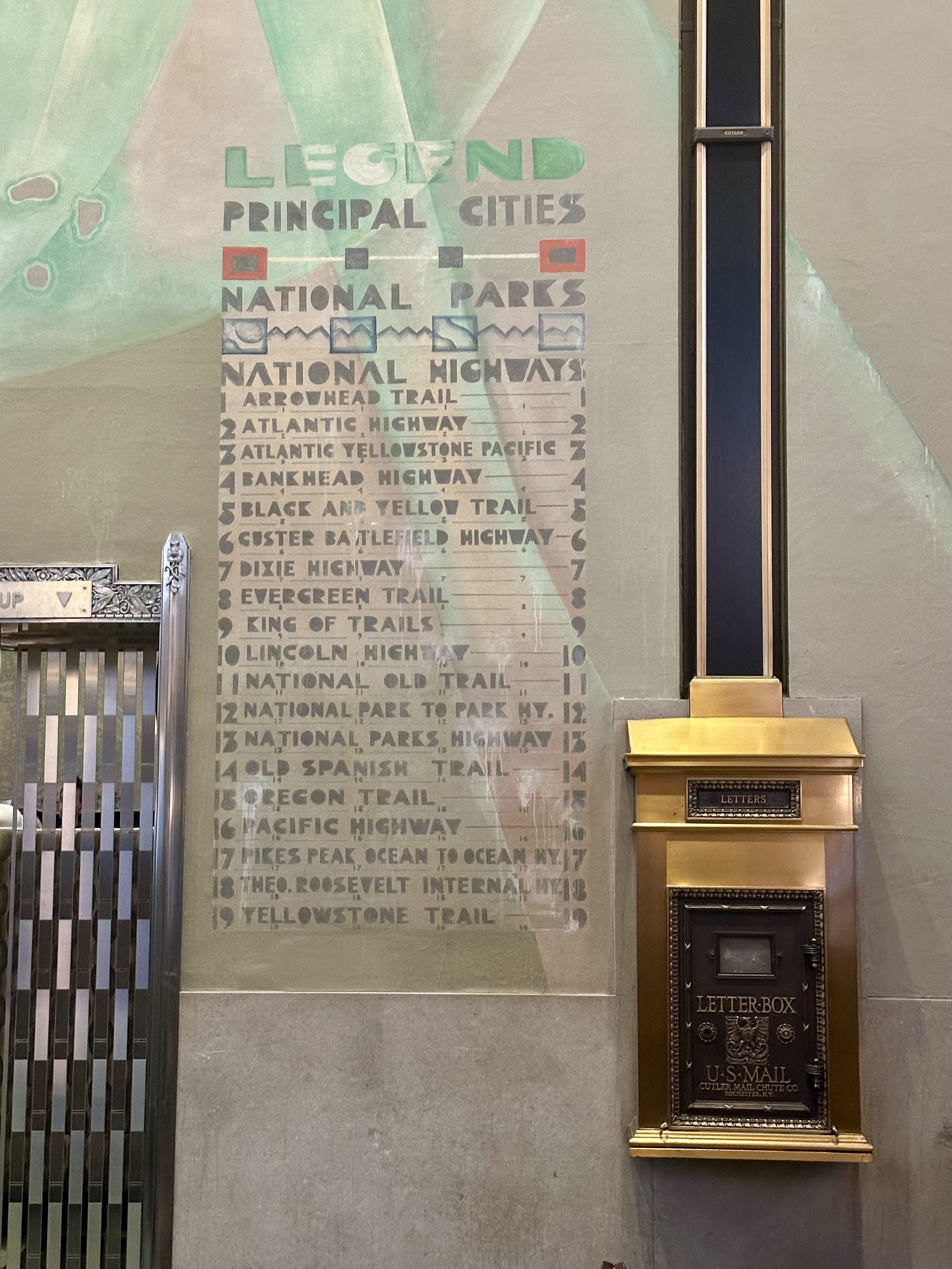Art Deco Skyscrapers in Chicago
When I see the phrase “Art Deco Skyscraper,” an image of New York City’s Chrysler Building comes to mind. Chicago doesn’t have anything quite like the Chrysler Building, but the city has so many great Art Deco buildings that the Chicago Architecture Center offered TWO walking tours. We took both of them!
Art Deco style originated in Paris in the 1910s and reached its height in the United States during the 1920s and 1930s (although the style’s name was not used until the 1960s). It was meant to convey modernity, luxury, and wealth. Art Deco style elements include distinctive shapes and patterns (sunbursts, chevrons, octagons, zigzags, and stylized flowers and leaves); streamlined verticality; and luxurious materials like bronze, glass, chrome, and marble.
Each walking tour explored the exteriors and lobbies of several buildings, and we had no trouble spotting the Art Deco elements. Most of the lobbies had beautifully decorated elevator doors. Aren’t they wonderful?
The lobbies also had Art Deco mailboxes, some of which looked like the buildings they were housed in, and most of which were still officially in use.
Highlights from Art Deco skyscrapers along the Riverfront:
The 333 North Michigan Building (1928) can be seen from the far northern end of the Magnificent Mile. The Tavern Club on the upper floors was once a private club with an ice-skating rink; its members included Frank Lloyd Wright, Mayor Richard J. Daley, Carl Sandburg, and William Wrigley.
The Carbide and Carbon Building (1929) had a distinctive exterior of black granite and bronze, and its tower was clad in 24-karat gold leaf. It was easy to see why its nickname is “the Champagne Bottle.”
Walking into the lobby of the Chicago Motor Club (1928) was like traveling back in time. There were geometric pendant lights, a huge peach and aqua map of the United States, and a (non-working) Model A.
The Trustees System Service Bank (1930), despite its industrious figures of workers and prominently displayed mottoes “Life Prospers the Thrifty” and “Life Punishes the Thriftless,” was actually a Ponzi scheme and closed after just four years.
The Merchandise Mart (1930) was the largest building in the world (four million square feet) until the Pentagon was completed in 1943. For many years, the building had its own zip code!


















Highlights from Art Deco skyscrapers along LaSalle Street in the Loop:
The One LaSalle Street Building (1930) had a stone façade with bas-reliefs of Joliet, LaSalle, Columbus, Marquette, and other historical figures. Its lobby was lavishly decorated with intricately patterned bronze grillwork and peacock light sconces. It was my favorite of all the Art Deco lobbies.
105 W Madison (1928) was a savings and loan institution catering to less wealthy clients. Its interior was less lavish, but still beautiful.
The Field Building (1934), was the last skyscraper to be built in Chicago before the Great Depression, and boasted modern technology like high-speed elevators and air conditioning. Outside, the building was covered in striking black granite with stripes of white marble. Inside were “upside down wedding cake” light fixtures and pedestrian bridges resembling ships’ gangways.
The Chicago Board of Trade (1930) was topped with a copper pyramid roof and a 31-foot aluminum statue of Ceres, the Greek goddess of agriculture. Despite its huge scale, the building lacked an imposing main entrance. This was because it was not open to the public; only members were permitted inside. The Chicago Board of Trade (CBOT) continues to operate there today.











Postscript
Not part of either tour, but near the Board of Trade building on LaSalle Street, was another iconic building called The Rookery. It was built in 1888 and extensively renovated by Frank Lloyd Wright in 1905. Art Deco elevators and other elements were added in a 1931 renovation. Its most distinctive feature was a beautifully decorated light court with a semi-circular staircase. The building has great historical significance; perhaps we’ll take a guided tour on a future visit to Chicago.





















